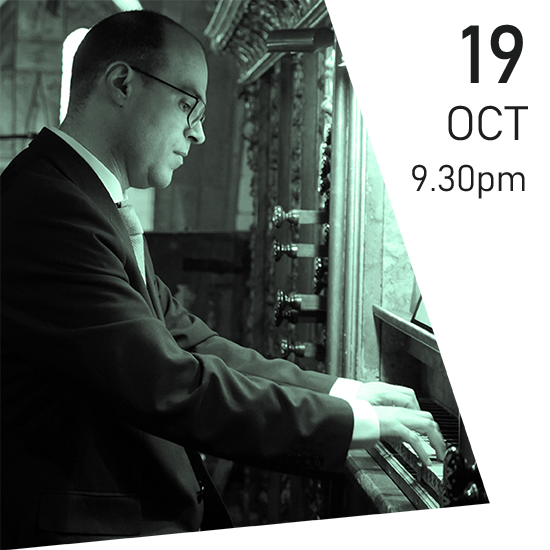 October 19, Saturday, 9.30 pm
October 19, Saturday, 9.30 pm
Sé do Funchal
António Esteireiro, organ
Carla Moniz, soprano
Collegium Vocale de Lisboa
Orquestra Clássica da Madeira
Martin André, direction
Maurice Duruflé’s Requiem is one of the most notable works of twentieth-century sacred music. Composed between 1947 and 1948, it reflects Duruflé’s deep connection with the liturgical tradition, especially Gregorian chant, and integrates modern influences and the harmonic refinement of French impressionism. Duruflé, a renowned organist and composer, was known for his mastery in writing for the organ and his in-depth knowledge of the liturgical repertoire. The Requiem stems from the recovery of a project begun in 1941 and was initially conceived for choir and organ, but Duruflé produced three versions: one for choir and organ, another for choir, organ and chamber orchestra, and a final version for choir and large orchestra. The version for choir, organ and chamber orchestra, written in 1961, will be performed in today’s concert.
The structure of Duruflé’s Requiem closely follows the traditional Requiem Mass of the Catholic Church, consisting of nine sections: Introït, Kyrie, Domine Jesu Christe, Sanctus, Pie Jesu, Agnus Dei, Lux aeterna, Libera me and In Paradisum. However, Duruflé presents a unique approach, merging antiguity and modernity, respecting tradition and innovating in the musical language.
One of the most emblematic aspects of the Requiem is the use of Gregorian chant as the basis for the melodic lines. Duruflé, a deep connoisseur of plainchant, integrated these traditional melodies in a fluid way, with rich harmonies and sophisticated textures. This approach provides the work with a serenity and spiritual depth that captivated both audiences and performers.
The Introït opens the Requiem with a serene and contemplative melody, establishing the meditative tone of the work. The harmonies, evocative of the modal style of Gregorian chant, are enriched with a modern harmonic palette, influenced by composers such as Gabriel Fauré and Claude Debussy.
In the Kyrie, Duruflé develops a complex polyphonic web, creating a sense of supplication and grandeur. Fauré’s influence, especially from his own Requiem, is obvious, but Duruflé brings a unique formal clarity and textural transparency.
The Pie Jesu features a solo vocal line, usually performed by a soprano or alto, accompanied by organ and cello. This is one of the most lyrical and introspective moments of the work, in contrast to the grander sections.
Libera me is marked by dramatic tension, with dense orchestration and expression of intense anguish. The work culminates with In Paradisum, where the simplicity of plainchant and gentle harmonies create a feeling of peace and transcendence.
Duruflé’s Requiem is a work that balances liturgical tradition with modernity, combining the austerity of Gregorian chant with a sophisticated harmonic language, establishing Duruflé as one of the great masters of sacred music of the twentieth century.
The organ improvisation that precedes Maurice Duruflé’s Requiem will be a natural extension of the work that follows. Using a musical vocabulary similar to the one employed by Duruflé in his Requiem, the improvisation will explore the same thematic material, creating an introduction that dialogues with melodies and harmonies deeply inspired from Gregorian chant. This approach aims to prepare the listener for the emotional and spiritual experience of the Requiem, establishing a connection between the tradition of organistic improvisation and Duruflé’s masterpiece, in a unique moment of creation and evocation.
— ANTÓNIO ESTEIREIRO —
Programme
António Esteireiro (1971)
¬ Improvisation on melodies from the Gregorian Requiem Mass
Maurice Duruflé (1902-1986)
¬ Requiem, Op. 9
› I – Introït
› II – Kyrie
› III – Domine Jesu Christe
› IV – Sanctus
› V – Pie Jesu
› VI – Agnus Dei
› VII – Lux aeterna
› VIII – Libera me
› IX – In Paradisum
